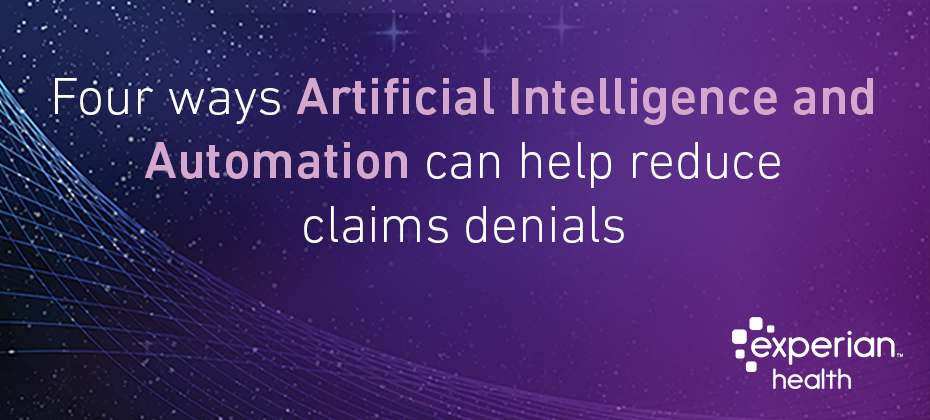
Artificial Intelligence (AI) and automation are the latest buzzwords in business innovation. But what exactly do they mean, and how can they help your healthcare organization?
Put simply (if that’s possible!), AI is when a machine mimics human thinking. It can spot patterns, learn from experience and choose the best solution in a given situation, solving problems with little or no human involvement.
While AI is focused on achieving a particular goal, automation is process-oriented. You can set it to follow rules depending on certain data inputs. It’s ideal for completing repetitive tasks efficiently, so the humans in your team can spend their time elsewhere.
In healthcare, there are endless opportunities for AI and automation to assist doctors in diagnosing and treating medical conditions, like Microsoft’s “Hanover” machine, which helps oncologists predict the best combination of drugs for each patient. Harvard Business Review investigated 10 promising AI applications in healthcare, which could save the US healthcare system $150 billion per year by 2026. Examples include AI-assisted robotic surgery, faster and more accurate image diagnosis, and determining ideal drug dosages for individual patients.
The opportunities aren’t all on the medical frontline either: AI and automation can be of significant value to a hospital’s revenue cycle. But many providers have only scratched the surface when it comes to integrating new technologies within their revenue cycle operations.
There are plenty of repetitive processes within the revenue cycle that can be time-consuming, tedious and prone to human error. Thanks to automation, many rote tasks such as handling denied claims and missed authorizations can be taken off your team’s to-do list, keeping productivity high and resource costs low.
Here are four ways AI and automation can help reduce claims denials specifically.
- Staying on top of ever-changing payer policies
Constantly changing payer payment rules create serious challenges for many providers, causing delayed payments, denied claims, increased billing costs and lost revenue. Providers often have no central repository to share updates with the right people across their health system, meaning individual departments have to allocate staff time to digesting the same notifications and newsletters. It’s extremely inefficient and can cost thousands in reworked claims.
With automated Payer Alerts you can avoid all of this. Payer Alerts give staff a convenient service that monitors more than 52,000 web pages by more than 725 payers, so you know you’re up to date with any changes. Handy daily email digests notify you of any specialty-specific updates, so you stay a step ahead.
John Neumeier from Arkansas Health Group says:
“Payer Alerts has been a very valuable tool. Before, our certified professional coders would go out and read all of the payer alerts and manuals from Medicare, Medicaid, Blue Cross and United Healthcare, and try to boil down and assimilate the things that were important to our organization. With Payer Alerts, we’ve got an email sitting there every morning with those things already done for us, so within just a couple of minutes we can scan through and identify what’s important to us, and then very quickly communicate that out to all of our clinics and managers.”
- Better patient matching to reduce claims denials
A third of all denied claims are linked to inaccurate patient identification. This costs hospitals an average of $1.5 million per year. The go-to solution often involves an enterprise master patient index (EMPI) to match and identify patients electronically. However, EMPIs are limited by their reliance on a single data source – their patient rosters. And if an error sneaks into the patient roster, it’ll be passed down when patient records are matched.
Instead, patient matching can be automated using a platform like the Universal Identity Manager. This draws on a variety of broader, more reliable data sources including Experian’s demographic and credit data, then calculates the likelihood that two records refer to the same person. A Universal Patient Identifier is assigned to each patient, so their correctly matched data is always trackable.
- More efficient claims verification
Your claims team can probably guess the likelihood of a denial based on their experience and data, but actually turning those insights into a robust, efficient process is not easy.
Machine learning tools such as Claim Scrubber can look at which claims have been denied in the past and why, and use that data to predict future denials. It tags at-risk claims so you know to run additional checks before sending them off to the payer.
Kahlynn Lawrence, Coding Operations Manager from Northwell Health, told us:
“It was a way to automate and create a worklist so that the coder could then focus on true coding issues. By doing this we were able to see results… From 2013 to 2017 we’ve been able to reduce our denials by 50% through using the Experian Claims Scrubber tool.”
- Actionable insights to help optimize your revenue cycle
A high-performing revenue cycle relies on powerful data analytics. But monitoring and synthesizing all the data that flows through your organization can be challenging. Machine learning algorithms can help here, giving you deeper insights about the performance of your revenue process.
With a business intelligence tool like Analytics, you can leverage multiple datasets to find predictive solutions that boost productivity and maximize your ROI. This tool gathers several data sources into a single dashboard so you can monitor and compare your organization’s performance against your most important KPIs. Industry comparisons and trends analysis will also help you find opportunities for more efficient billing, predictive reimbursement and improved payer performance.
Healthcare providers devote vast quantities of time and money to interactions with payers, often due to untracked payer policy changes, error-strewn patient records, or avoidable denied claims. More streamlined revenue cycle management can help you get those claims right the first time. You can stop wincing at the revenue and staff time lost to denials that could be invested elsewhere. So, if you’re looking for ways to do more with less and stop the bleed of rising healthcare costs, perhaps cutting edge AI and automated solutions could hold some of the answers?
Visit us at booth #405 during HFMA’s annual meeting or visit www.experianhealth.com/analytics to learn more.



